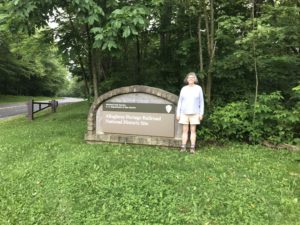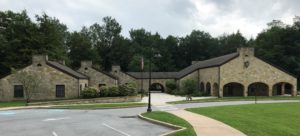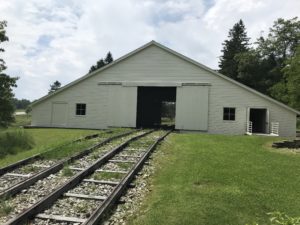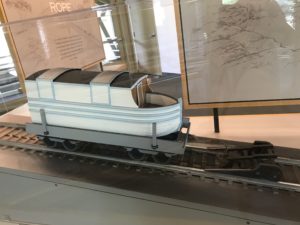 As promised yesterday, I am writing about the Allegheny Portage Railroad National Historic Site which Tom and I visited last week. This is one of the five parks in the Western Pennsylvania group of National Park Sites. It is also the farthest away from Fort Necessity: almost 95 miles.
As promised yesterday, I am writing about the Allegheny Portage Railroad National Historic Site which Tom and I visited last week. This is one of the five parks in the Western Pennsylvania group of National Park Sites. It is also the farthest away from Fort Necessity: almost 95 miles.
You might think that the Allegheny Portage Railroad National Historic Site is about a railroad. You would be wrong, at least as you normally think about a railroad. If your only requirement for a railroad is that it be a road on rails, then you are closer to the mark.

When the Erie Canal was completed in New York in 1825, the merchants of Philadelphia were jealous. They wanted a way to get their goods across Pennsylvania as easily as the merchants of New York City could get theirs across New York. So the state of Pennsylvania decided to build a canal of their own. The “Main Line” – the main line for goods across Pennsylvania – was started in 1830 with a railroad from Philadelphia tot he Susquehanna River. Then a canal continued the line upriver to the Allegheny Mountains. But the engines of these early railroads were not powerful enough to haul goods up the mountains. So the engineers of the day came up with an ingenious solution.

The Allegheny Portage Railroad consisted of large stationary steam engines that hauled goods and people up an incline railway and lowered them down Allegheny Mountain on the other side. The cars were counterbalanced on each side to help the engines do their work. After a few years, the engineers developed a way to load entire barges onto railcars to get them up and over the mountain. Riding up the incline as a passenger was a thrilling experience. A special brake car pulled behind the railcar stopped the car if the towing rope broke. Once on the other side of the mountain, people and goods continued their journey to Pittsburgh on the canal.

Despite its ingenuity, the Allegheny Portage Railroad only ran for 20 years. By 1857, railroad engines were powerful enough to make it up and over Allegheny Mountain. The canal across Pennsylvania was sold to the Pennsylvania Railroad and became a railroad right of way.
Tom and I got to see this marvel of engineering. We stopped first in the Visitors Center to look at the exhibits and see the movie. Then we walked to the Engine House 6 where we could see some rails and look at exhibits about the steam engines. We also stopped at the Lemon House, a tavern at the top of the mountain where people could get a meal or drink. You can also see the Skew Arch Bridge which carried wagon traffic over the railroad. The Staple Bend Tunnel, the first railroad tunnel in the United States, is also part of the park.

The Allegheny Portage Railroad is a very interesting National Historic Site. It proves what Tom and I are always saying, “Those old guys were smart!”
